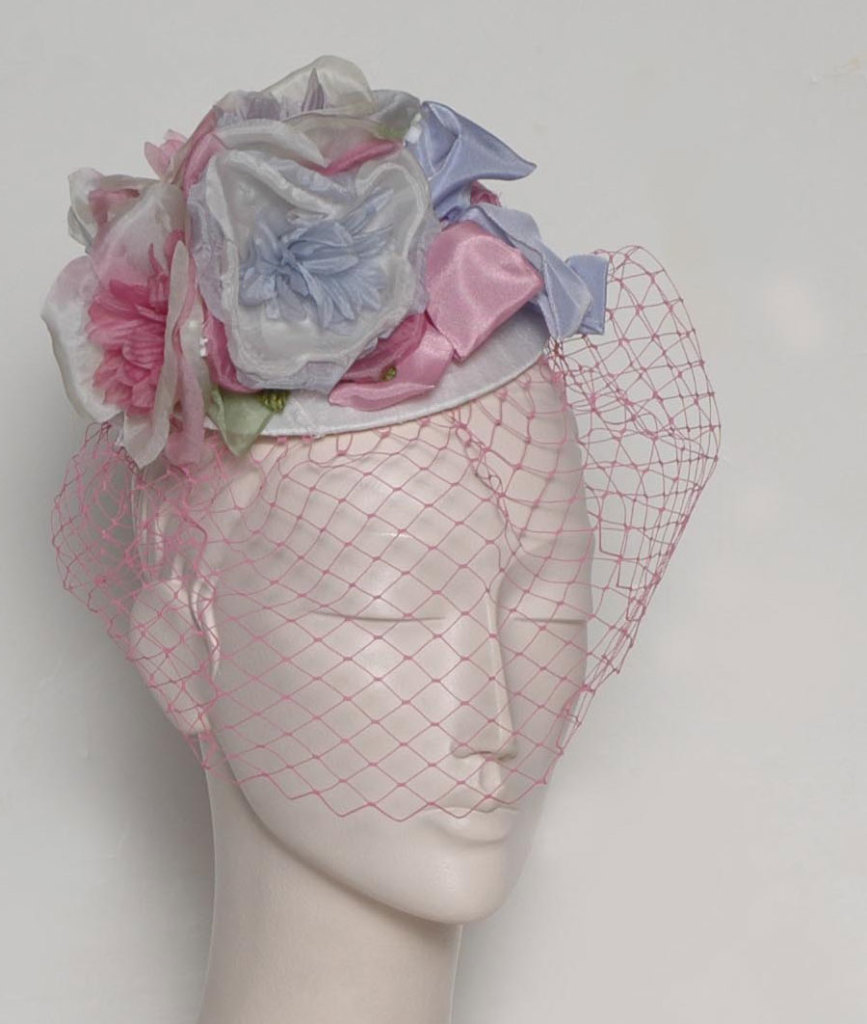
Photo and beautiful flower hat by Diana Cavagnaro
On my birthday I like to make a trip to Warwick’s in La Jolla to find a book I didn’t know I wanted to read. This year Some Girls, Some Hats and Hitler caught my eye. It’s a memoir written by the Viennese milliner, Trudi Kanter, in the time of Hitler.
It was my love of hats, fabrics, veiling and trim that drew me to the book. I wasn’t disappointed. Kanter describes in luscious detail her world, her hat shop in Vienna, and trips she made to Paris to purchase supplies and discover the latest in couture.
On one trip, Kanter’s friend shows her a sly way to copy hats in Paris Houses without being obvious (and getting thrown out). I’ve already made good use this method; when I try on a hat at a store I’m busy measuring its brim, the crown, and memorizing what I’d like to copy.
When you are holding the model hat, you can measure. Use the length of your thumb, your middle finger and your little finger. Use the palm of your hand and the length from your wrist to the end of your middle finger. Color, shape, and trimming you have to memorize, and then apply the measurements you have taken. (62–63)
As she tells her story, Kanter draws you into her romance with a handsome man and a dazzling city. She says:
In love with a city? Yes. I was in love with Vienna, where I was born. Its calm, its charm, its old houses, every corner of every street. Even in the early thirties, when many Viennese were poor and unemployed, I found its magic irresistible. (10)
The dark side of this timeline is Hitler, the Nazis, and the terrible things people do to each other when everyday life becomes twisted. Kanter tells of Jews, randomly plucked from the street, old men and women, young girls and boys, forced to scrub anti-Hitler slogans from the pavement outside of the Vaterländische Front, with barely diluted acid that made their hands bleed. This is only the beginning of unspeakable cruelties.
As a writer, there’s one disconcerting facet of Kanter’s narration. Whenever she describes someone, she focuses on eyes. This begins to feel like reading clichéd phrases from a romance book, where the tall, dark and handsome lover has eyes like “two deep pools.”
For example:
- In the twilight, his eyes are purple velvet. (7)
- Your eyes, the blue of African violets (13)
- Glittering black eyes (14)
- Large eyes, the color and sparkle of well-cut sapphires (17)
- My dark-haired, dark-eyed father (17)
- Large emerald and diamond earrings matched her eyes (21)
- Big, dark blue eyes (24)
- Shrewd, penetrating eyes (25)
- Eyes like pools, dark, deep, pensive (47)
- Her eyes, round like large marbles, were light blue. Left-right, left-right, they never missed a thing. (63)
- His muddy carp’s eyes. (71)
- His nasty little bird’s eyes (73)
I can go on, but the point is made. Descriptions of eyes abound. At first I wondered if because she was a milliner and quick to observe the shape of the face, the hairstyle, and the eyes. Good milliners design hats that draw attention to the best features and minimize flaws.
As I continued reading I found my answer. When Kanter returns from a trip she designs a collection of hats that are less gay than those she had seen in Paris. She says, “I used more veiling, to hide women’s eyes. To hide their sorrow.”
Kanter, Trudi. Some Girls, Some Hats and Hitler: A True Love Story. Scribner, 2014.
